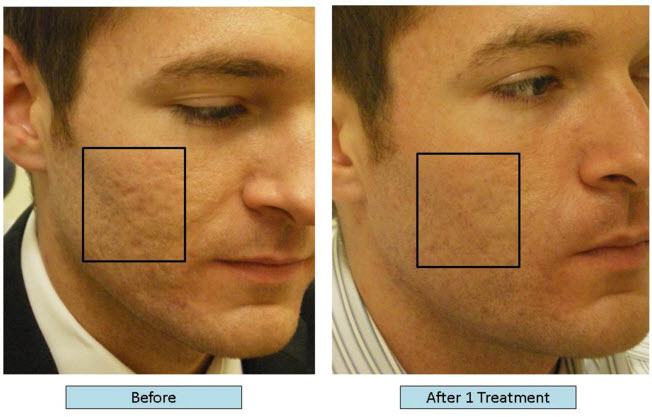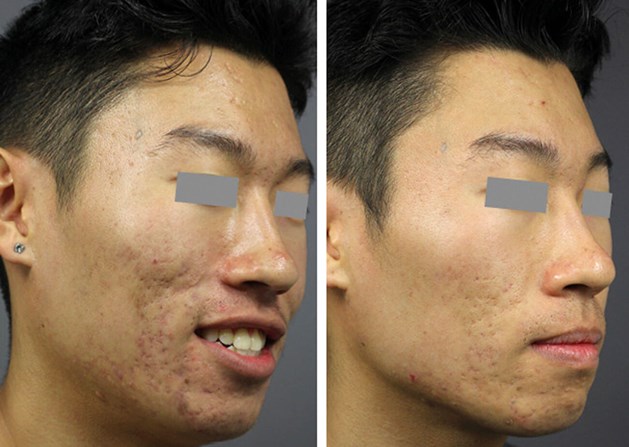Checking Out Skin Problem: Dealing With and identifying Acne Scars for Healthier Skin
Acne scars represent a considerable problem for people looking for to keep healthy and balanced skin, as they can affect both appearance and self-confidence. Recognizing the different kinds of marks, from atrophic to hypertrophic, is vital for establishing suitable therapy choices. While specialist treatments like chemical peels and microneedling can be efficient, the significance of individualized treatment strategies can not be overstated. In addition, preventative actions play an important role in decreasing future scarring. As we discover these aspects, one must consider just how the right approach can cause transformative results.
Understanding Acne Marks
Understanding acne scars is critical for anyone that has experienced severe acne, as these marks can have a long lasting influence on both physical appearance and mental well-being. When the skin goes through inflammatory reactions throughout energetic acne lesions, acne scars develop. The severity of scarring is usually influenced by variables such as the kind of acne, its period, and individual skin attributes.
The body's natural healing procedure can lead to either atrophic scars, which show up as depressions in the skin, or hypertrophic scars, which are raised and result from overproduction of collagen. In addition, the mental toll of acne scars must not be underestimated; many individuals report sensations of shame, stress and anxiety, and decreased self-worth. This psychological problem can affect social interactions and general high quality of life.
Addressing acne marks needs a comprehensive understanding of their development and effect. Understanding of the possibility for long-term consequences connected with unattended scars can inspire individuals to seek appropriate treatments. Early intervention and efficient monitoring approaches can significantly improve skin look and improve mental durability, stressing the relevance of recognizing the intricacies surrounding acne scars.
Kinds of Acne Scars
Acne scars can be categorized into unique kinds, each exhibiting distinct qualities and requiring details treatment methods. The primary sorts of acne scars include atrophic, hypertrophic, and keloid scars.

Hypertrophic marks, in contrast, are increased over the skin degree and are the outcome of excessive collagen production during the healing process. They normally continue to be within the boundaries of the initial acne lesion. Keloid scars are comparable yet extend past the original injury site, developing bigger, increased areas that can be scratchy or painful.
Recognizing these sorts of marks is essential for selecting appropriate treatment options. Different scars may react far better to particular therapies, such as laser treatments, fillers, or surgical treatments, stressing the importance of a tailored approach to acne scar management.
Recognizing Your Marks
Acne marks generally fall right into 2 classifications: hypertrophic and atrophic marks. These can even more be identified into ice-pick scars, boxcar scars, and rolling marks, each showing distinct characteristics and calling for various strategies for evaluation - acne scars.
Hypertrophic scars, on the various other hand, are increased and take place because of excessive collagen production during the healing process. Recognizing the specific attributes of your marks-- such as structure, deepness, and size-- is important for proper recognition. In addition, think about the distribution of marks across your skin, as this can suggest the intensity and period of the acne problem.
Involving with a skin doctor can supply important understandings right into the nature of your scars, aiding in the distinction in between various kinds. A complete understanding of your scars will eventually lead to a much more tailored and reliable therapy plan, ensuring a clearer and healthier complexion.
Treatment Options Readily Available
Determining the certain kind of acne scars present on your skin lays the groundwork for exploring efficient therapy alternatives. Typical kinds of acne scars consist of atrophic (clinically depressed), hypertrophic (increased), and post-inflammatory erythema.
For atrophic scars, choices such as chemical peels, microneedling, and laser resurfacing are extensively used. Chemical peels use acids to eliminate the external layer of skin, promoting new cell growth.
Hypertrophic scars can be treated with corticosteroid injections to squash the scar or laser therapy to reduce redness and enhance appearance. acne treatment for sensitive skin. Silicone gel sheets and stress dressings may additionally Read More Here help in taking care of raised marks
Furthermore, dermal fillers can momentarily load in anxieties from atrophic marks, while surgical excision might be proper for serious cases. Each treatment alternative has its benefits and considerations, making it vital to speak with a dermatologist. They can offer tailored referrals based on the kind and intensity of your Check Out Your URL scars, as well as your skin kind and overall wellness.
Tips for Prevention
Effective avoidance techniques can significantly lower the probability of developing acne marks. The initial step is to preserve a consistent skin care routine that consists of gentle cleaning, exfoliation, and hydrating. Using non-comedogenic items helps stop blocked pores, which can aggravate acne. Furthermore, incorporating topical therapies including salicylic acid or benzoyl peroxide can properly decrease and manage outbreaks inflammation.
Avoiding need to select or pop acne lesions is important, as this can lead to deeper skin damage and boost the threat of scarring. Instead, take into consideration using a chilly compress or non-prescription treatments to lower swelling and redness.
Sunlight protection is another crucial read this post here facet of avoidance; ultraviolet (UV) rays can darken marks and prevent the recovery procedure. Applying a broad-spectrum sunscreen with a minimum of SPF 30 daily can secure the skin and advertise even recovery.
Lastly, keeping a balanced diet regimen abundant in vitamins, minerals, and anti-oxidants supports skin wellness and healing. Remaining moisturized and managing anxiety levels can likewise play a significant function in reducing acne flare-ups. By executing these strategies, people can substantially minimize their opportunities of developing acne marks.

Conclusion
In final thought, understanding and recognizing acne marks is important for efficient treatment and attaining much healthier skin. Various types of acne scars, including atrophic and hypertrophic marks, demand particular treatments customized to individual demands. Treatment options array from chemical peels and microneedling to corticosteroid shots, stressing the importance of speaking with a dermatologist. Furthermore, taking on a gentle skincare regimen and securing the skin from UV exposure can significantly contribute to the avoidance of further scarring and overall skin health.
The body's all-natural healing process can result in either atrophic scars, which appear as depressions in the skin, or hypertrophic scars, which are increased and result from overproduction of collagen. They are additional separated right into 3 subtypes: ice choice scars, boxcar marks, and rolling scars. Acne marks usually drop into two categories: hypertrophic and atrophic scars. These can even more be identified right into ice-pick scars, boxcar scars, and rolling marks, each exhibiting unique characteristics and requiring various approaches for analysis.
Different types of acne marks, consisting of atrophic and hypertrophic scars, demand certain interventions customized to individual needs.